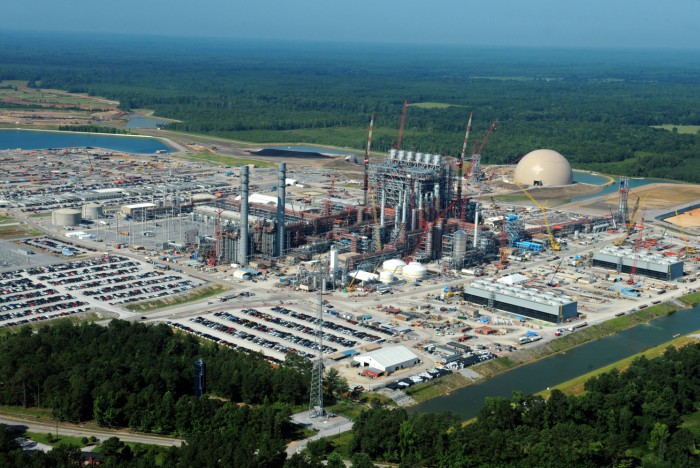Clean Coal’s Flagship Project Has Failed

The Mississippi power plant widely regarded to be the biggest proof of concept yet for clean coal has failed to deliver on its promise. Its carbon capture technique has been declared too costly and problematic, and the facility will instead burn natural gas to create electricity.
The coal-fired power station in Kemper County had many hopes pinned to it since construction began in 2010. The theory was simple: if a plant could be built to cleanly burn nearby lignite coal reserves—the most heavily carbon-emitting of all coal types, per unit of heat extracted—then the fuel’s future in American energy production would be assured.
Sadly, things haven’t played out that way. The project has been mired in problems from the get-go and has run up a $7.5 billion tab—$4 billion over its planned budget—with the carbon capture scheme three years behind schedule. Now, the New York Times reports, the plant’s owner, Southern Company, has ditched its attempts to get it working as designed, following pressure from the Mississippi Public Service Commission to switch to natural gas and stop hemorrhaging money.
The plant was supposed to gasify the soft brown lignite coal to create a fuel that emits similar amounts of carbon dioxide as natural gas when burned. According to a description of the technology by Power magazine, that would in theory have reduced the carbon dioxide emissions associated with burning that coal by 65 percent.
But the gasification systems have not worked as planned, and the Kemper plant has instead been burning natural gas. Now, it will continue to do so. Southern says that it is “immediately suspending start-up and operations activities” for coal gasification at the plant.
It’s a huge blow for clean coal. Despite some successes in cutting carbon emissions from fossil-fuel power plants, by and large the process is still considered too costly to implement at scale. That’s especially true given that prices for renewable energy are continuing to decline swiftly. Indeed, a newly published analysis from the Global Warming Policy Foundation suggests that carbon capture schemes will always remain too expensive to be viable as the cost of clean energy drops.
As part of his push to reinvigorate the fossil-fuel industry, earlier this year President Donald Trump said that his administration was “putting an end to the war on coal,” providing America with “clean coal, really clean coal.” Now more than ever, that looks like an empty promise.
(Read more: New York Times, “The Bottomless Pit: The Economics of Carbon Capture and Storage,” “A Mississippi Power Plant Highlights All That’s Wrong with ‘Clean Coal,’” “A Huge Carbon Capture Scheme Provides New Hope for ‘Clean Coal,’” “Clean Energy Is About to Become Cheaper Than Coal”)
Deep Dive
Climate change and energy
The problem with plug-in hybrids? Their drivers.
Plug-in hybrids are often sold as a transition to EVs, but new data from Europe shows we’re still underestimating the emissions they produce.
Harvard has halted its long-planned atmospheric geoengineering experiment
The decision follows years of controversy and the departure of one of the program’s key researchers.
Why hydrogen is losing the race to power cleaner cars
Batteries are dominating zero-emissions vehicles, and the fuel has better uses elsewhere.
Decarbonizing production of energy is a quick win
Clean technologies, including carbon management platforms, enable the global energy industry to play a crucial role in the transition to net zero.
Stay connected
Get the latest updates from
MIT Technology Review
Discover special offers, top stories, upcoming events, and more.